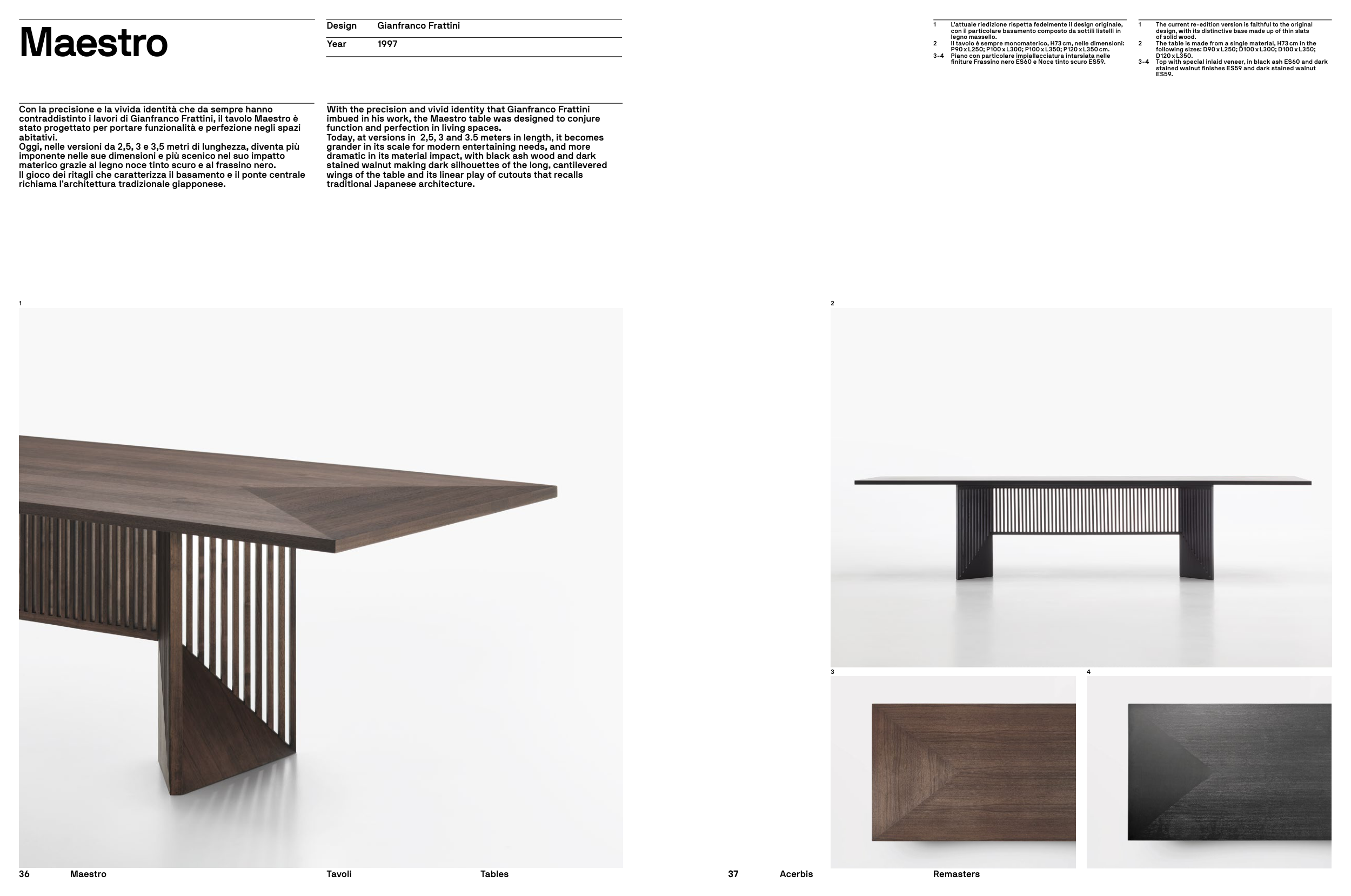Design
Gianfranco Frattini
Year
1997
1
L’attuale riedizione rispetta fedelmente il design originale,
con il particolare basamento composto da sottili listelli in
legno massello.
2
Il tavolo è sempre monomaterico, H73 cm, nelle dimensioni:
P90 x L250; P100 x L300; P100 x L350; P120 x L350 cm.
3-4
Piano con particolare impiallacciatura intarsiata nelle
finiture Frassino nero ES60 e Noce tinto scuro ES59.
1
The current re-edition version is faithful to the original
design, with its distinctive base made up of thin slats
of solid wood.
2
The table is made from a single material, H73 cm in the
following sizes: D90 x L250; D100 x L300; D100 x L350;
D120 x L350.
3-4
Top with special inlaid veneer, in black ash ES60 and dark
stained walnut finishes ES59 and dark stained walnut
ES59.
1
2
3
4
36
Tavoli
Maestro
37
37
Acerbis
Remasters
Tables
Con la precisione e la vivida identità che da sempre hanno
contraddistinto i lavori di Gianfranco Frattini, il tavolo Maestro è
stato progettato per portare funzionalità e perfezione negli spazi
abitativi.
Oggi, nelle versioni da 2,5, 3 e 3,5 metri di lunghezza, diventa più
imponente nelle sue dimensioni e più scenico nel suo impatto
materico grazie al legno noce tinto scuro e al frassino nero.
Il gioco dei ritagli che caratterizza il basamento e il ponte centrale
richiama l’architettura tradizionale giapponese.
With the precision and vivid identity that Gianfranco Frattini
imbued in his work, the Maestro table was designed to conjure
function and perfection in living spaces.
Today, at versions in 2,5, 3 and 3.5 meters in length, it becomes
grander in its scale for modern entertaining needs, and more
dramatic in its material impact, with black ash wood and dark
stained walnut making dark silhouettes of the long, cantilevered
wings of the table and its linear play of cutouts that recalls
traditional Japanese architecture.
Maestro


